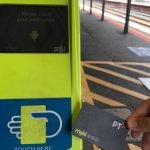
I’m still stunned by the results of EDUCAUSE’s survey about the relative importance of technologies and technology-enabled processes. “This is the fifth year that EDUCAUSE has tracked the influence of major trends on the IT strategy of colleges and universities.” The most recent survey was published in early 2019. EDUCAUSE “assessed … 49 IT trends and 77 strategic technologies presented … via a single EDUCAUSE survey in the summer of 2018. The survey was distributed to 11,397 EDUCAUSE members as part of the Top 10 IT Issues research, with three reminders sent; 405 individuals (4%) completed the survey.” (Not sure why only 4% responded. Maybe it had something to do with technology.) Nor am I sure why trends data is released “based on the responses of 297 US-based respondents.”
The “Low Impact” 13
With those complaints registered, here’s the list of technologies survey respondents declared as “limited impact” technologies:
-
- “Cross-institutional and international scholarly and research collaborations
- Ubiquitous digital sources and streams (social media, IoT, systems and applications, OERs, etc.)
-
- Freedom of speech
- Bimodal IT (managing two separate IT delivery modes, one focused on stability and the other on agility)
- Adaptive learning
- Internet of Things
- Alternative credentialing models
- National and global political uncertainty
- Declining international enrollments
- Use of algorithms to influence institutional and individual choices
- Climate change
- Artificial intelligence (AI)
- Deregulation of higher education”
What did I miss? How in the world could these technologies and technology-enabled processes be declared of “limited impact,” which means, according to EDUCAUSE, that only between 0-20% of respondents believe the technologies deserve a more vaulted position on the strategic technology list? In fact, the technologies on the “low impact” list failed to even make the “worth understanding” list! Here are the categories into which the technologies were slotted:
- “Most influential: trends that were already incorporated or exerting a major influence on emerging IT strategy in 61% or more of institutions
- Taking hold: already incorporated or exerting a major influence on emerging IT strategy in 41–60% of institutions
- Worth understanding: already incorporated or exerting a major influence on emerging IT strategy in 21–40% of institutions
- Limited impact: already incorporated or exerting a major influence on emerging IT strategy in 20% or less of institutions”
So what are the most influential technologies? Here’s the list:
- “Uses of APIs
- Active learning classrooms
- Blended data center (on premises and cloud based)
- Incorporation of mobile devices in teaching and learning
- Open educational resources
- Institutional support for accessibility technologies
- Technologies for improving analysis of student data
- Application performance monitoring
- Predictive analytics for student success (institutional level)
- Integrated student success planning and advising systems (tie) & IT asset management tools (e.g., CMDB; tie)
From “Limited Impact” to “Worth Understanding”
Here are just a few reasons why AI, social media & IOT might be promoted from the “limited impact” list to the “worth understanding” list:
- The admissions process – now under fire (again) – could easily be automated and objectified; in fact, what administrative processes can’t be automated? Robotic process automation (RPA) could live on campuses for years.
- Educational processes can be reinvented with intelligent simulations that enable both experiential and immersive learning.
- Smart buildings moving toward smart campuses could revolutionize the way students, faculty and staff navigate campuses for multiple purposes. AI, IOT and social media will play pivotal roles on smart campuses.
- Online education can be customized with AI.
- The appropriate use of social media can contribute to internal well-being and external branding perhaps more than any other technology.
Learning House identifies 4 areas where AI can help:
- “Student acquisition, where AI could personalize the enrollment experience for students and help schools target those applicants most likely to succeed in their programs;
- Learning and instruction, where AI could help instructors do grading and provide instructional help to students;
- Student affairs, where AI could assist in degree planning and intervene with struggling students to provide advising or other resources; and
- Institutional efficiency, where AI could compile data from multiple systems to guide administration decision-making.”
Education Diveoffers ideas about how AI can enhance operations.
Hanan Aldowah et al reports in the Journal of Physics/Conference Series that: “IoT stands to change dramatically the way universities work, and enhance student learning in many disciplines and at any level. It has huge potential for universities or any other educational institutions.”
Andy David, writing in D!gitalist, identifies how higher education can be transformed with IOT:
- “Immersive and connected educational spaces
- Connected infrastructure: safer, more-efficient use of space
- Personalized learning
- Increased sustainability and cost savings”
Social media? Same thing. Look at “the important role of social media in higher education” by Sharuna Segaren, “social media Use in higher education,” by Georgios Zachos, Efrosyni-Alkisti Paraskevopoulou-Kollia and Ioannis Anagnostopoulos, and Higher Education Administration with Social Media, by Laura A. Wankel and Charles Wankel, among so many others.
What did I miss? And what about the rest of the list? Like “freedom of speech,” “adaptive learning,” and “the use of algorithms to influence institutional and individual choices”? Limited impact there too?
What Were They Thinking?
It’s hard to imagine how the limited impact technologies list came to be. One theory is that the 297 respondents were technology infrastructure managers – not strategic technologists. Even though the EDUCAUSE survey was about strategic technology, it’s hard to imagine how blended data centers are so much more important than AI. (Remember, there are five levels of impact and AI is on the least impactful level and blended data centers are on the highest.) Another theory is that the depth of understanding of the broad applicability of AI, IOT and social media is low due to their relative newness as possible drivers of higher education processes, models, products and services. Regardless of why AI, IOT and social media failed to make the medium or high impact lists, none of us – and especially those who work in higher education – should believe that AI, IOT or social media will have limited impact on their worlds. Maybe next time there will be 2,977 respondents instead of 297. Maybe next year the results will reflect observable trends.
[“source=forbes”]










